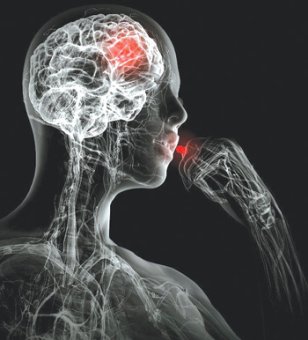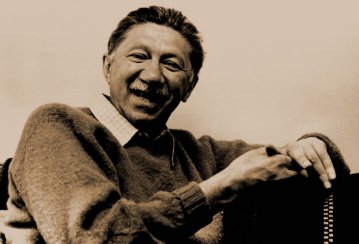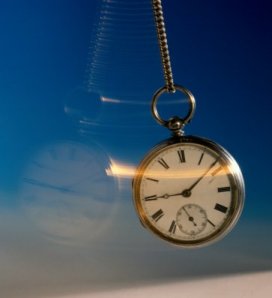Mood:
Topic: Hypnosis & Psychology

By Marco Torres
There’s no doubt that many medications work in the short-term to suppress symptoms. In fact, that’s all they do as they are incapable of addressing the underlying cause of disease. But even when a medication works, half of its impact on a patient is be due to one aspect of the placebo effect: the positive message that a doctor provides when prescribing the treatment, according to a new study.
Much of medicine is based on what is considered the strongest possible evidence: The placebo-controlled trial. The problem is that this foundation upon which much of medicine rests, has no standard.
The thinking behind relying on placebo-controlled trials is this: to be sure a treatment itself is effective, one needs to compare people whose only difference is whether or not they are taking the drug. Both groups should equally think they are on the drug — to protect against effects of factors like expectation. So study participants are allocated “randomly” to the drug or a “placebo” — a pill that might be mistaken for the active drug but is inert.
But, according to Beatrice Golomb, MD, PhD, associate professor of medicine at the University of California, San Diego School of Medicine, this standard has a fundamental problem, “there isn’t anything actually known to be physiologically inert. On top of that, there are no regulations about what goes into placebos, and what is in them is often determined by the makers of the drug being studied, who have a vested interest in the outcome. And there has been no expectation that placebos’ composition be disclosed. At least then readers of the study might make up their own mind about whether the ingredients in the placebo might affect the interpretation of the study.”
Researchers are just starting to appreciate the power that the mind can have over the body, says Tor Wager, an assistant professor of psychology at Columbia University.
“An emerging idea right now is that belief in a placebo taps into processes in your brain that produce physical results that really shape how your body responds to things,” he says. “The brain has much more control over the body than we can voluntarily exert.”
As an example of this, Wager points to the body’s response to perceived threats.
“Say it’s late at night and everything is quiet and then suddenly you see someone outside, near a window,” he explains. “Your body starts to respond. Your pupils dilate. Your heart rate goes up. You start to sweat.”
The belief that something threatening is out there produces a host of physical responses that you have little control over. If you were told to calm down and turn off these sensations, you couldn’t, Wager says. “But if the belief changes — say, it turns out that it’s just your husband coming home — the physical response changes.”
A positive or negative effect of the placebo can lead to the misleading appearance of a negative or positive effect of the drug.
The placebo effect is a consciousness event, and more specifically an event in which consciousness and matter interact to change or transform a disease structure into a healing process or flow. At the level of reality at which this event takes place, it is not even possible to say that it is an interaction. This is a level at which consciousness-matter, or as it is more popularly known, mind-body, are not different but are a ‘stuff’, for want of a better word, which is not committed to either condition, yet is both.
Study Details
Researchers designed an elaborate study, in which 66 people suffering from migraine headaches were given either a placebo, or a common migraine drug called Maxalt. However, for each migraine attack the participants had during the study period, they were told something different. For example, they were told they were taking a placebo when they were actually taking Maxalt, or vice versa, and sometimes they were told the pill could be either Maxalt or a placebo.
The pain-relieving benefits of the migraine drug increased when patients were told they were taking an effective drug for the treatment of acute migraine. And when the identities of Maxalt tablets and placebo pills were switched, patients reported similar pain relief from placebo pills labeled as Maxalt as from Maxalt tablets labeled as a placebo, according to the study published today (Jan. 8) in the journal Science Translational Medicine.
The results suggest that the information people have is as important as the effects of the drug in reducing pain, the researchers said.
“In many conditions, placebo effect is a big part of the effect of the drug,” said study researcher, Ted Kaptchuk, a professor of medicine at Harvard Medical School. In the new study, 50 percent of the drug’s effect could be attributed to the placebo effect", he said.
This could equally work for any drug including vaccines. The relevance is not related to the drug itself but how it is presented to the patient. If a patient believe they are being protected from something, that belief system alone may a role in the drug’s effectivness.
“The more you give a positive message, the more a drug works. In this case, our message was just as important as the pharmacology of the drug,” Kaptchuk said.
In other words, patients may benefit from optimistic messages from their doctors, which may enhance the effectiveness of a good pharmaceutical, the researchers said.
“When doctors set patients’ expectations high, Maxalt [or, potentially, other migraine drugs] becomes more effective,” said study researcher Rami Burstein, a professor of anesthesia at Harvard Medical School. “Increased effectiveness means shorter migraine attacks and shorter migraine attacks mean that less medication is needed,” Burstein said.
Placebo Effect Can Be Activated Outside of Conscious Awareness
Described in an on-line issue of the Proceedings of the National Academy of Sciences (PNAS), new findings demonstrated that the placebo effect can be activated outside of conscious awareness, and provide an explanation for how patients can show clinical improvement even when they receive treatments devoid of active ingredients or of known therapeutic efficacy.
“In this study, we used a novel experimental design and found that placebo and nocebo [negative placebo] effects rely on brain mechanisms that are not dependent on cognitive awareness,” explains first author Karin Jensen, PhD, of the Department of Psychiatry and the Martinos Center for Biomedical Imaging at Massachusetts General Hospital (MGH) and the Program in Placebo Studies (PiPS) at Beth Israel Deaconess Medical Center/Harvard Medical School. “A person can have a placebo or nocebo response even if he or she is unaware of any suggestion of improvement or anticipation of getting worse.”
It has long been believed that placebo responses are related to conscious beliefs or thoughts and that when given an inert pill or therapy, patients get better because they have the expectation that they will get better, or in the case of nocebos, get worse because they anticipate that they will get worse.
However, more recently, scientists have recognized that humans learn to expect either reward or threat quickly and automatically without needing to consciously register the idea in their brains. As the authors write, neuroimaging studies of the human brain have suggested that certain structures, such as the striatum and the amygdala, can process incoming stimuli before they reach conscious awareness, and, as a result, may mediate non-conscious effects on human cognition and behavior.
Bodily memories
The placebo effect is centered on the idea that a person’s expectations and beliefs drive changes in symptoms, even though they have received a sugar pill or a sham treatment with no effect. Knowing that they have received a placebo changes their expectations, which is expected to alter the placebo effect.
However, people report pain relief even when they know the pill they are receiving is a placebo, compared with no treatment at all.
This finding “contradicts the medical beliefs,” Kaptchuk said. “Because in medicine, we think you have to think it’s a real drug for placebo to work. But apparently, the body has memories, or an embodied awareness, which operates below the level of consciousness.”
One possible mechanism for this effect could be that the body is conditioned to react positively in situations related to addressing our health.
Part of what goes into the brain’s interpretation is expectation. The placebo response, at least in part, is a manipulation of expectancy and by changing the expectancy and placebo response we might be able to ultimately find a way to provide sustained therapy for chronic pain without any medication at all.
Rituals and the words of healing activate the brain to release neurotransmitters that change the experience of illness. They can activate centers in the brain that modulate many symptoms like pain and nausea and fatigue.
Contrary to conventional wisdom that patients respond to a placebo because they think they’re getting an active drug, more findings reinforce the idea that placebo treatment alone may have a therapeutic benefit shattering the concept of functional medicine.
About the Author
Marco Torres is a research specialist, writer and consumer advocate for healthy lifestyles. He holds degrees in Public Health and Environmental Science and is a professional speaker on topics such as disease prevention, environmental toxins and health policy.
Source - wakingtimes.com










